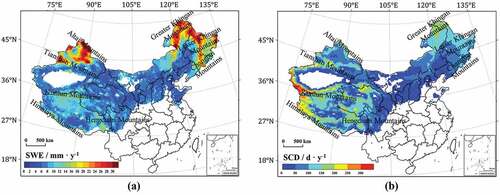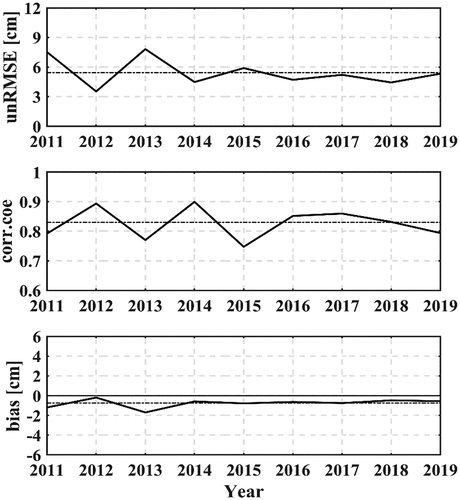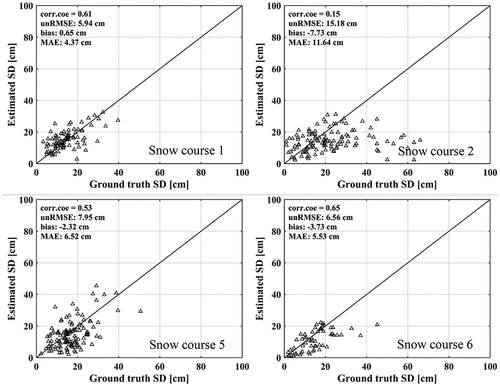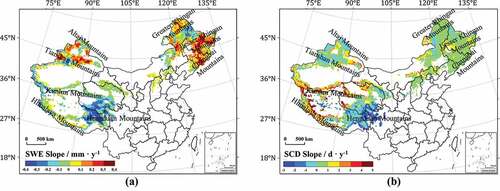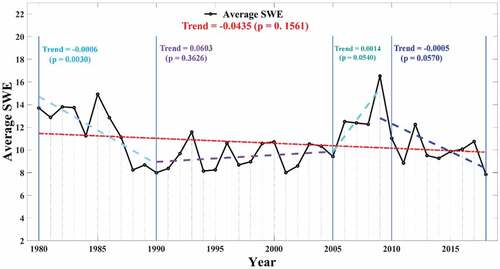Figures & data
Figure 1. Spatial distribution of (a) meteorological stations and field snow courses; (b) land use types over China.

Table 1. The main parameters measured along these four snow survey courses (conducted from December 2017 to May 2019).
Table 2. Summary of the main passive microwave remote sensing sensors. The letter “A” and “D” represent ascending and descending, respectively.
Table 3. The information of the SWE product provided by this paper.
Figure 5. Spatial distribution of annual (a) averaged SWE and (b) snow cover days (SCD) during the period 1980–2018.
